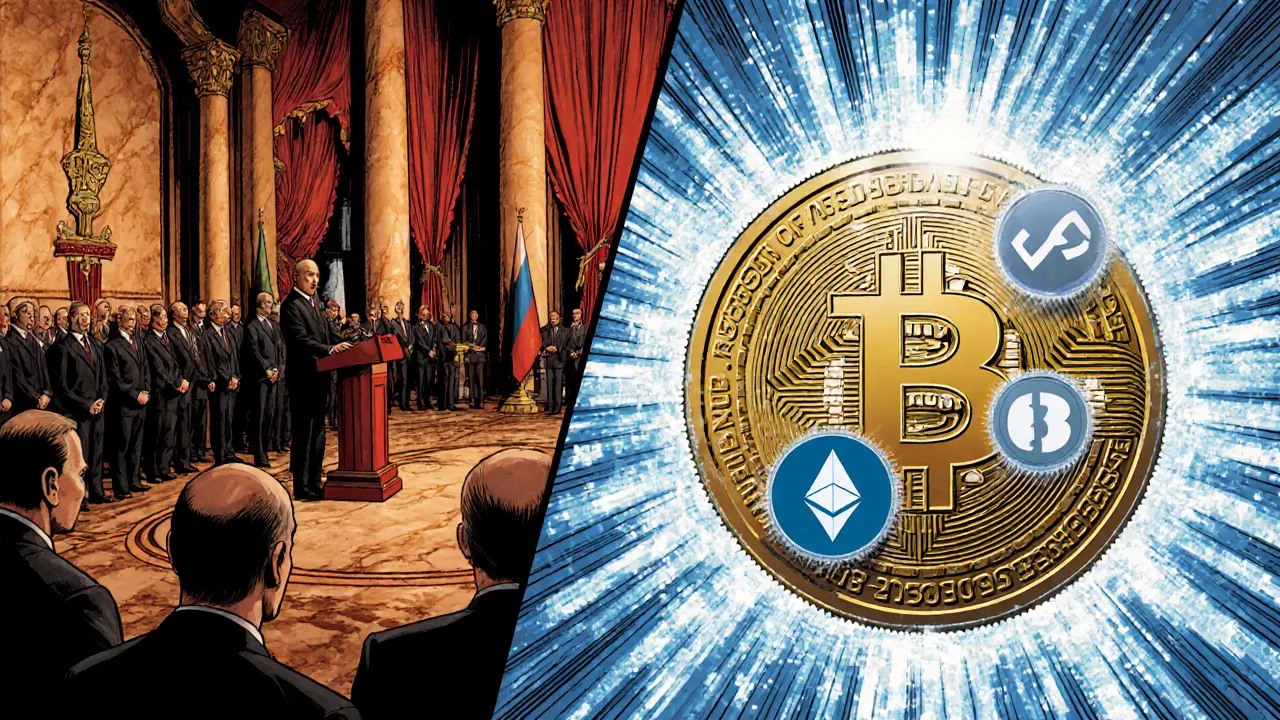Russia's New Bitcoin Cross‑Border Payment Rules 2025
Explore Russia's new 2025 regulations allowing Bitcoin for cross‑border payments, the pilot framework, compliance steps, market impact and future outlook.
Continue ReadingWhen dealing with Bank of Russia, the central authority that guides monetary policy, supervises banks, and enforces financial regulations in Russia. Also known as CBR, it directly influences how cryptocurrencies are treated within the country, the picture changes fast. One of its most visible moves is the crypto ban, a rule that blocks banks from processing crypto‑related payments and limits retail access to digital assets. The ban forces traders to look for work‑arounds, like peer‑to‑peer platforms or foreign exchanges, and it fuels a whole underground premium market. Another side effect is the rise of bank account freeze, a compliance action where banks lock crypto‑linked accounts under anti‑money‑laundering directives. These freezes often happen after the GENIUS Act, new legislation that tightens monitoring of crypto transactions in Russia, leaving users scrambling for alternatives. At the same time, the Bank of Russia is piloting a central bank digital currency (CBDC), a state‑backed digital ruble designed to coexist with, or replace, private crypto use. The CBDC effort shows the bank’s dual strategy: curb unregulated crypto while offering a regulated digital alternative.
Understanding the Bank of Russia’s policies helps you navigate the crypto space in Russia without hitting a wall. The Bank of Russia dictates whether a crypto exchange can partner with local banks, which in turn decides if you can withdraw fiat directly. When the bank enforces the crypto ban, you’ll notice higher spreads on Bitcoin trades, especially on platforms that still accept Russian users. The freeze mechanism adds another layer of risk: if your account is flagged, you could lose access to funds for weeks while the bank reviews the case. On the flip side, the CBDC rollout promises faster, cheaper settlements compared to traditional banking, and it could eventually integrate with crypto wallets if regulators allow tokenized rubles. Keeping an eye on official statements from the Bank of Russia lets you predict when new rules might hit, so you can adjust your strategy—whether that means moving to stablecoins, using offshore exchanges, or exploring DeFi protocols that bypass traditional banks.
Below you’ll find a curated list of articles that break down these topics in detail. From how the 2025 crypto banking ban forces traders into workarounds, to step‑by‑step guides on dealing with account freezes, and updates on the Russian CBDC pilot, the collection covers the full spectrum of challenges and opportunities created by the Bank of Russia’s actions. Dive in to get the practical insights you need to stay ahead in this rapidly shifting environment.

Explore Russia's new 2025 regulations allowing Bitcoin for cross‑border payments, the pilot framework, compliance steps, market impact and future outlook.
Continue Reading